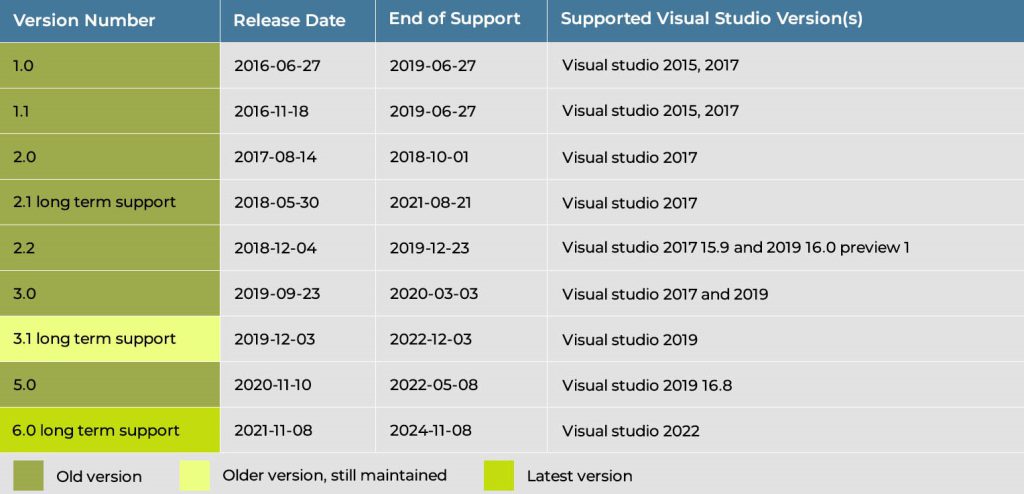What is .NET Core? Everything You Need to Know About it
These days, many companies and organizations devote a significant amount of resources to developing mobile applications. If you make your own apps, you can directly cater to the requirements of your employees or customers, regardless of whether you are developing the app for your own company or your customers. Microsoft’s highly effective .NET Core framework can create these apps in a snap. This guide will assist you in gaining a better understanding of the functionality of .NET Core if you are considering using it.
.NET Core: What is it?
Creating apps is easy and quick for programmers thanks to a robust software framework called .NET Core. Microsoft made this framework to replace the .NET Framework on all platforms.
Net Framework was limited because it was only made for Windows, even though developers greatly liked it. Microsoft made.NET Core, which lets programmers make apps that can be used on any device, including mobile ones, to get around this limitation.
With the help of .NET Core, a multi-platform framework, you can make software apps for Windows, Linux, and MacOS. .NET Core is the most flexible software framework compared to other frameworks. It can make any software, including web applications, mobile applications, desktop applications, cloud services, microservices, application programming interfaces (APIs), games, and Internet of Things (IoT) applications. Unlike other frameworks,.NET Core works with many different programming languages, such as C#, VB.NET, F#, XAML, and TypeScript. These programming languages can be used for free and are kept up to date by independent groups.
Because it has the best class libraries, common APIs, support for multiple languages, and tools,.NET Core is the best version of the.NET framework. Because Visual Studio 2019 and Visual Studio Core are the most advanced and contemporary integrated development environments (IDEs),.NET Core is one of the most productive platforms for developers.
What is ASP.NET Core?
An open-source web development framework called ASP.NET Core was created for creating contemporary cloud-based applications. Compared to the original ASP.NET framework, it has several benefits, such as enhanced performance, cross-platform compatibility, and easier development. Unlike earlier versions, which could only be used with Windows, ASP.NET Core is now cross-platform and can be used with Linux and macOS as well.
The first version of ASP.NET, a complete redesign of Microsoft’s well-known web development framework, ASP.NET, was released in 2016. The new version was intended to produce a leaner and more modular framework that could be used to develop cutting-edge cloud applications.
Microsoft removed Core from the name and shortened it in November 2020. As a result, new releases will be referred to as.NET and then a version number. The.NET 5 version, released in November 2020, was the first to use this naming scheme. Every November, a new version of.NET Core (now known simply as.NET) is released.
Due to name changes, there may occasionally be some ambiguity regarding the name, and various names, such as ASP.NET Core or.NET Core, will be used interchangeably.
Essential elements of ASP.NET Core:

- A cutting-edge, multi-platform runtime that can be created and used on Windows, Linux, Docker, and macOS.
- A new modular design that enables better caching and optimization results in increased performance.
- A unified framework that streamlines development by fusing MVC and Web API into a single pipeline.
- A new programming model for Razor Pages that makes it simpler to create page-focused applications.
History of ASP.NET

The original Active Server Pages language was rewritten to become ASP.NET. Active server pages are more commonly known by their acronym ASP. Microsoft enhanced this web technology and incorporated it into the industry-changing.NET framework. The initial two beta versions of ASP.NET were made available to users in 2000 and 2001. The first version of Microsoft’s .NET framework was made available to the public on January 5, 2002, and it was given version number 1.0. This framework included ASP.NET 1.0 as one of its components. As a result of the fact that Microsoft’s common language runtime technology was utilized during the development of ASP.NET, it is compatible with the usage patterns of all .NET languages.
In addition, thanks to the ASP.NET SOAP extension framework, components built with ASP.NET can process SOAP messages.
Why Should You Make Your Move to .NET Core?
In this article, we will give some critical reasons why you should use the ASP.NET Core framework to create applications that will improve user experience and use innovative ideas like the internet of things (IoT), blockchain technology, and artificial intelligence (AI). You can create web services with the help of ASP.NET Web API, which uses HTML as its protocol.
Because of the intense competition in the web design industry and the need to provide clients with novel products, most web design companies are concentrating on developing custom web applications through cutting-edge technologies.
Learn more about effective web design techniques.
Before you can build any application to deploy one suitable for your company, you need to have a solid grasp of the fundamental idea behind your company. After that, the next significant step is to select the most appropriate technological platform for the project you are working on.
When it comes to the creation of web applications, we are well aware that there are a great many technologies that can be taken into consideration. Java and PHP are examples of technologies that use an open-source model, while ASP.NET MVC is an example of an innovation that uses a closed-source model. When it comes to your project, choosing the most appropriate technology can be very challenging and aggravating for you.
You will be able to build better applications with the help of ASP.NET Core’s five features which are as follows:
1. Support for multiple platforms as well as containers
Since the release of.NET Core, applications written in ASP.NET can now be created and run on all three major operating systems: Windows, Linux, and macOS. For ASP.NET to run appropriately, Microsoft and the community have put in a lot of effort to bring Linux up to the level of a first-class operating system.
These days, containers are consuming the skies like there’s no tomorrow. Docker, Kubernetes, and several other technologies enjoy significant popularity. As a result of ASP.NET Core, software developers now have access to all of these cutting-edge technologies. Microsoft Azure even provides support for deploying your application to containerized environments managed by Kubernetes.
2. centered on achieving results
Some people believe that performance is one of the most critical aspects of your software. Since the release of ASP.NET Core and the Kestrel web server, Microsoft’s ASP.NET has been marketed as one web application framework with the fastest performance. On TechEmpower, there are some cool benchmarks that you can look at.
Both the integrated pipeline for ASP.NET and the Internet Information Server (IIS) were powered by technology that was approximately 15 years old. In addition to its successes, it came with a lot of baggage. To take advantage of asynchronous programming models, the new Kestrel web server underwent a comprehensive redesign to become significantly less resource-intensive and swifter.
3. Applications hosted on third-party websites
Sometimes, you will need to develop a web application that will not be installed on a server running IIS but rather on a desktop computer.
The perfect example of this would be Prefix, a free ASP.NET profiler we offer. An ASP.NET application being run as a Windows Service is the source of all of the HTML displayed on the website’s front end.
There are many different routes to develop a self-hosted ASP.NET web application. Using Owin, Nancy, or WCF in.NET 4.5 would allow you to accomplish this task. When developing Prefix, we combined Owin and the ASP.NET Web API.
ASP.NET Core also supports utilizing the Kestrel web server, the system default. One of the many advantages of utilizing.NET Core is the transformation of your web application into what is essentially a console application. The role that IIS plays in front of it is that of a simple reverse proxy. This suggests that you will only be able to deploy your application using Kestrel for use cases that are not server-based. One example of such a use case is Prefix.
4. Hosting:
Virtually any web server, such as Microsoft’s Internet Information Services (IIS), Apache, or a different web server of your choice, can host an ASP.NET Core web application. Since it is a part of the default.NET Framework, it is not dependent on IIS.
Code Sharing is a feature that allows you to create a class library compatible with older versions of Mono or the.NET Framework, such as 4.x. As a consequence of this, several different frameworks can share a single code base.
This feature, which allows for the simultaneous versioning of applications, is enabled by ASP.NET Core, a component of the.NET Core framework.
5. Less of an imprint during the deployment process
ASP.NET Core applications must be run on the more compact version of the.NET Framework, known as.NET Core. Consequently, the size of an application’s deployment that uses.NET CoreFX in a limited capacity will be reduced. As a result, the space required for deployment is reduced.
What Applications Can We Create Using .Net Core?
- Web: Razor Pages, Web API, ASP.NET Core MVC, and Microservices
- Mobile
- Console
- Desktop Programs (Starting from 3.0)
- IoT
- ML
- Game Applications
- Applications in the Cloud
Language Assistance
You can create.NET Core applications using any of the languages the Dot Net Core Framework supports.
C#, F#, and Visual Basic (VB)
.NET Core Should Be Used In Your Software Development
It’s crucial to pick a development platform that will offer the stability, security, and performance required when developing software apps, whether they are customer-facing or for internal use. For developers looking for a dependable and scalable platform, .NET is a great choice.
.NET Core is cross-platform, open source, and supports the creation of mobile apps. Additionally, you can be sure that your apps will function properly for your user’s thanks to Microsoft’s support.














